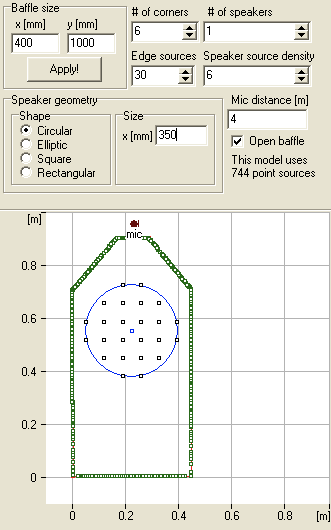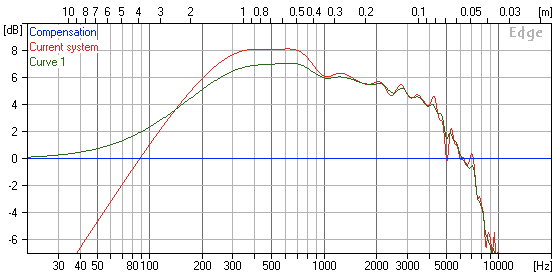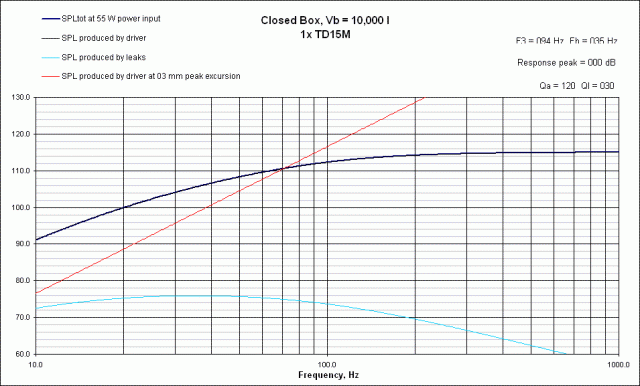
Here is an option for the mid-bass unit that makes this an even more sensitive dipole than the initial proposal. And that is to use a Lambda Acoustics TD15M woofer. Here is the modeled response of this driver in infinite baffle, with 55W input power:
With the higher rolloff frequency, the subwoofers will definitely be required for this version. However, with a nominal sensitivity of 97 dB/W/m, we gain a lot of transient capability in the 100 to 600 Hz region (or wherever the crossover ends up being).
The gradual rolloff is because of the driver’s relatively low Qts – it’s not ideal for dipole operation. However, it has enough sensitivity that eq can be applied and we’re still a good way ahead.
This driver will need a larger baffle. Here’s the prototype design, which is 450mm wide and 900mm tall – a good size for a prototype since I can walk into the hardware store and buy material already cut to this size:

And here’s the baffle response:

The red line is the open baffle response. The green line is the baffle response of a closed box, and serves to highlight that the output from the driver into 4π space is at the line marked as “0.” So, at around 90 Hz, the output from the driver has dropped to that level. This is interesting, because when you think about it, this means that, to get flat response at say 90 Hz, it’s not really 6 or 8 dB of boost that is required, but only 2 dB, if you consider it relative to what the driver would be producing if mounted in a box. In other words, 4-5 dB of boost (or attenuation, depending on how you look at it) would have been required anyway – the extra needed for dipole rolloff is not very much at all. At 40 Hz, the additional boost needed is around 7 dB. (I just thought this was interesting, and helps to put dipole eq into perspective.)
Now, for this particular driver, its own response is already rolling off at 90 Hz. This could in fact be flattened out by placing a resistor in series with the driver, thus raising its effective Qts. However, then the efficiency drops in the mid-band – we’re better off equalizing the drooping response in the lower range than wasting power all through the midband.
Postscript: As I was finishing up this blog entry, I realized that my attitude/approach has changed since I became “miniDSP-enabled.” I had previously considered using this driver in a dipole but rejected it. With the miniDSP, I can “fix anything,” at least as far as frequency response goes (well OK, for the pedants, amplitude only). So my project ideas are becoming more adventurous and I can focus on more interesting parts of the design challenge. Still, the proof of the pudding is in the eating, so we shall see.
